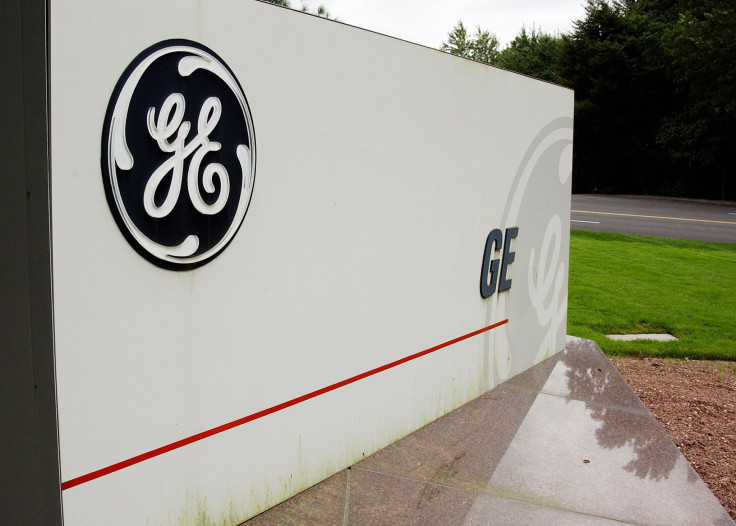Federal Regulators Let General Electric Quash Shareholder Resolution On Hudson River Pollution

When Democratic presidential candidate Bernie Sanders called for General Electric to remove all of the chemicals it had pumped into New York's Hudson River, he was joining a growing chorus of environmental groups and lawmakers making the same demand. And in late March, those protesters appeared to notch a win when the Environmental Protection Agency agreed to move up a scheduled review of the situation. But that small success followed GE’s own significant victory over its environmentally conscious shareholders — achieved with help from Obama administration regulators.
According to little-noticed filings with the Securities and Exchange Commission, a group of GE shareholders informed the company it was submitting a resolution that, if passed, could have compelled the company to produce a full evaluation of the legal liability it could face if it does not fully clean up the polychlorinated biphenyls, or PCBs, it leaked into the river during the mid-20th century. The resolution proposal came as GE was pressing forward with a plan to shutter its Hudson River dredging operation — a move that prompted one federal environmental agency overseeing the river to warn that the company “has not addressed nor compensated the public for injuries to natural resources” related to PCB pollution.
With that warning highlighting how GE could face future legal action, the shareholder resolution asked the company to offer “conclusions on the most responsible and cost-effective way to address” the issue.
In response to the resolution — which was backed by religious groups and the New York state pension fund, which own GE shares — GE contacted the SEC (whose chairwoman had GE as client while she was a private lawyer, according to the Associated Press). The company told the agency it intended to omit the resolution from its annual proxy statement, thereby preventing shareholders from even voting on it. As justification, the company said the shareholder resolution “relates to the company’s ordinary business operations, specifically the company’s litigation strategy.” Therefore, GE argued, the company was within its rights under the law to kill the resolution before it could even be considered by all of its shareholders.
In February, regulators at the SEC opted to side with GE management against the shareholders.
“We will not recommend enforcement action to the Commission if GE omits the proposal from its proxy materials,” wrote the agency’s Division of Corporation Finance in a letter reassuring GE executives about their decision to quash the resolution.
The ruling by the Obama administration’s SEC was a victory for GE, which has ties to President Barack Obama. The company’s employees were collectively among Obama’s top donors in 2008 and in all, they have delivered more than $689,000 to Obama’s Senate and presidential campaigns, according to data compiled by the nonpartisan Center for Responsive Politics. In 2011, Obama appointed GE CEO Jeffrey Immelt to chair the President's Council on Jobs and Competitiveness. The company has also regularly lobbied the SEC during Obama’s tenure, according to federal records .
The SEC’s decision in the GE matter, which was first flagged by a blog affiliated with the University of Denver's law school, came amid questions about the agency’s role in making sure corporate executives respect shareholder rights. Those questions have specifically revolved around its role in rules governing what kind of shareholder resolutions must be included in annual proxy statements. In 2015, the agency decided to stop issuing “no action” rulings when companies try to remove shareholder resolutions that conflict with resolutions from management.
In the case of GE, the threat of such shareholder resolutions have played a role in the larger fight over the company’s pollution of the Hudson River. In 2006, shareholders used the prospect of a resolution to force the company to disclose the amount of money it had spent on fighting efforts to make it clean up the Hudson. The disclosures found that nearly $800 million was spent by the company between 1990 and 2005, including $122 million on public relations and lobbying, as well as $86.6 million on legal fees.
GE has agreed to dredge some of the Hudson to remove PCBs, but environmental groups assert that since federal agencies have discovered more PCBs in the river, the company should reverse its recent decision to halt the cleanup.
“We learned that there were two to three times more PCBs in the river than the EPA estimated,” Natural Resources Defense Council’s Dan Raichel told International Business Times last August. “Long story short, there’s going to be way more PCBs in the Upper Hudson than both the EPA and GE predicted in 2002.”
In response to IBT questions about the quashed shareholder resolution, a spokesperson for GE said in an emailed statement that "GE completed one of the largest and most complex environmental dredging projects ever performed in the United States."
The statement said "GE has met 100 percent of its obligations to EPA and EPA has concluded that no additional dredging is necessary because the project is achieving the agency's goals of protecting human health and the environment.”
© Copyright IBTimes 2025. All rights reserved.






















